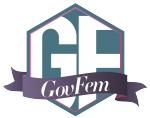The annual Federal Employee Viewpoint Survey (FEVS), released by the Office of Personnel Management (OPM), has served as an invaluable tool for federal government since 2010. The FEVS measures government employees’ perceptions of whether, and to what extent, conditions characterizing successful organizations are present in their agencies.
The survey assesses perceptions of the work environment through a number of indices: levels of employee engagement and satisfaction; perceptions of rewards and recognition based on merit; opportunities for professional development and growth; and other factors that can influence recruitment and retention.
Because these questions are centered on the experiences and opinions of employees, these results can help agency leaders address the aspects of their organizations and leadership that might impede productive and effective workplaces. The FEVS provides valuable insight into the various challenges faced by federal agencies, highlights government-wide trends and identifies areas of improvement. For people interested in entering the federal workforce, these results can also help determine which agencies might be the best fit.
The 2017 survey results, released on October 12, reveal an overall positive snapshot of federal government. More than 486,000 employees participated in the survey, representing 80 federal agencies. Results were up (rated more positive) in nearly every survey item and index from the preceding year. The main highlights from this year’s FEVS include:
The Employee Engagement Index (EEI) is made up of three sub-factors: Leaders Lead (employees’ perceptions of integrity of leadership and leadership behaviors such as communication and workforce motivation), Supervisors (interpersonal relationship between worker and supervisor) and Intrinsic Work Experience (employees’ feelings of motivation and competency relating to their roles in the workplace). The overall EEI score increased two percentage points government-wide from 2016, for a score of 67 — the highest level since 2011.
The New Inclusion Quotient (New IQ) measures the inclusivity of the work environment, with questions grouped into 5 Habits of Inclusion:
- Fair – Are all employees treated equitably?
- Open – Does management support diversity in all ways?
- Cooperative – Does management encourage communication and collaboration?
- Supportive – Do supervisors value employees?
- Empowering – Do employees have the resources and support needed to excel?
The overall New IQ score increased two percentage points to 60, the highest level since the index was first reported.
As of September 2016, the majority of federal civilian employees were men (56.7 percent). In light of the ongoing fight to make federal government more representative and gender-inclusive, agencies’ New IQ score becomes especially salient and suggests the most supportive work environment for women.
So, which agencies score best on inclusivity in 2017?
- Among “Very Large Agencies” (more than 75,000 employees), the top two scoring agencies for this year were the Department of Health and Human Services (66) and the Department of Agriculture (63).
- For “Large Agencies” (10,000–74,999 employees), the top two scoring agencies were National Aeronautics and Space Administration (78) and General Services Administration (70).
- For “Medium Agencies” (1,000–9,999 employees), the top two scoring agencies were the Federal Trade Commission (78) and Federal Energy Regulatory Commission (74).
- Among “Small Agencies” (100-999 employees), the highest-scoring agencies were the National Endowment for the Arts (75) and the U.S. International Trade Commission (74).
- Finally, for “Very Small Agencies” (less than 100 employees), the most inclusive places to work are the Marine Mammal Commission (97) and the U.S. Trade and Development Agency (81).
For women interested in starting a career in federal government or switching to a different federal agency, this survey can be a great place to look through your options. Though diversity and inclusion indices have been improving government-wide, these top-scoring agencies (based on self-reporting from current employees) are likely to offer more opportunities for women to succeed and feel empowered and valued in the workplace.
These data are a good starting point, but there are a number of other criteria or demographics you can examine as well (e.g. the percentage of female employees at each agency, women in supervisory positions, women making over $80,000 per year, etc.). Check out OPM’s Fedscope database, or look at the annual Best Places to Work in the Federal Government rankings, produced by the Partnership for Public Service. The latter resource is especially helpful if you want to compare agencies by demographic information or mission- or environment-related categories (for example, the Best Places to Work for female employees and employees with disabilities, or rankings for best work-life balance and support for diversity).






Leave a Reply
You must be logged in to post a comment.